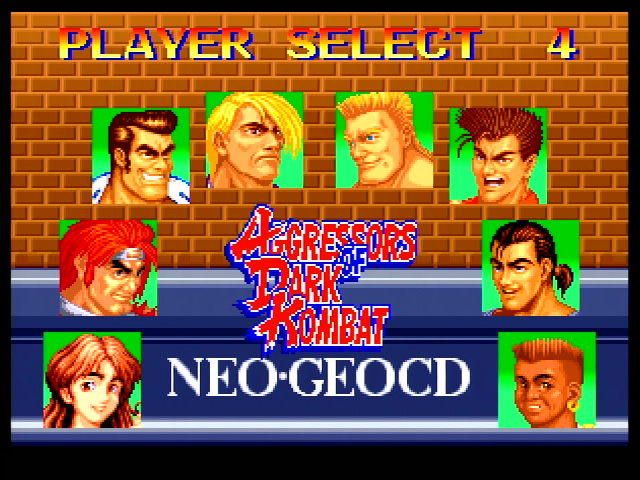Neo Geo Genesis: The Alpha 68000
The Neo Geo: we’ve talked about it a lot on this site. And it’s an interesting system, so why not? Its sprite-based graphics system proved flexible enough to allow it to last up until 2003, at which point all of its 2D competition had moved on. But instead of looking at the end, let’s look at the beginning: the arcade systems that led up to it.
Alpha Beta Gamma… Denshi?
We’re going to talk a lot about ADK in this article. So who are they, exactly?
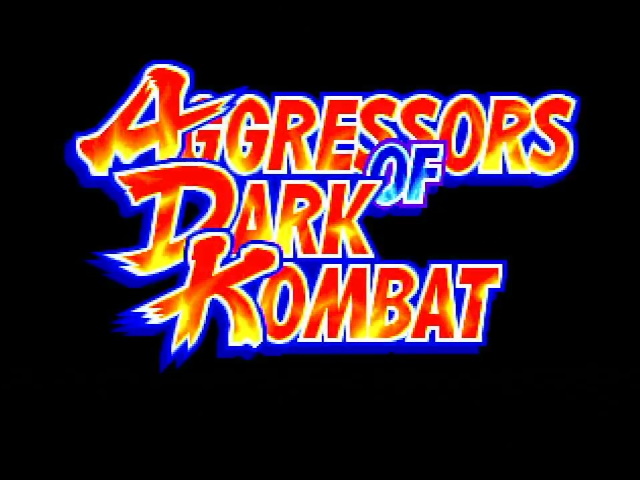
Don’t believe the western localization of Tsuukai Gangan Koushinkyoku– ADK actually stands for Alpha Denshi Kabushiki-kaisha, or Alpha Electric Corporation. (Therefore, ADK Corporation, the company’s corporate name after 1993, is a redundant acronym) The company was based in Saitama, north of Tokyo, and in 1993 it became a second-party developer of SNK, unable to make games outside of SNK’s platforms, a factor that likely led to the company’s demise as SNK itself faltered at the turn of the millennium.
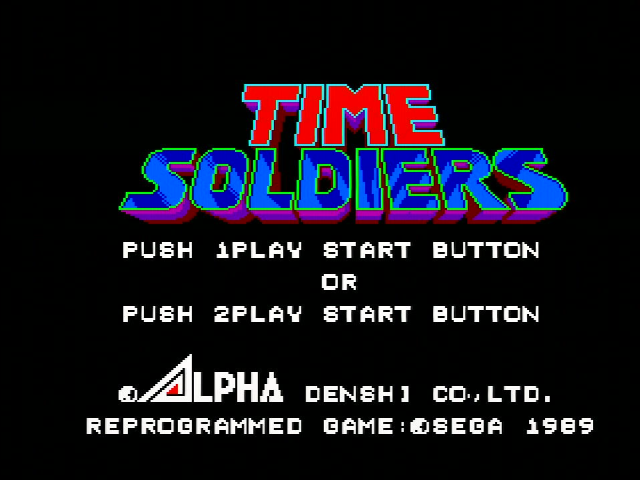
ADK was a prolific developer in the days of the Neo Geo, but has a bit of a reputation as being a tier below SNK’s works. But that isn’t quite fair; sure, games like World Heroes may not have had the polish of a King of Fighters, but many of their other games, such as the first-person arcade action RPG series Crossed Swords, the shooter-puzzle hybrid Twinkle Star Sprites, and the platformer Magician Lord stand out as some of the most creative on the platform.

And honestly, ADK should know the Neo Geo pretty well. Take a look at whose name is on the schematics of the Neo Geo– ADK employee Eiji Fukatsu.

The Neo Geo, flagship of SNK, is in fact the endpoint of an array of hardware ADK had developed since their entry into the arcade business back in 1980, when they released an unlicensed Doraemon game called Dorachan. (As far as I can tell, the Hyper Neo Geo 64 was an in-house SNK production)
So, having taken a look at a lot of SNK’s later hardware, from the Hyper Neo Geo to the MV0 series that ended the Neo Geo’s run, now let’s roll back the clock to the hardware line that most directly led to the Neo Geo’s existence in the first place: the Alpha-68K series.
But first, we need to talk about… branding. Sort-of.
Arcade boards and branding
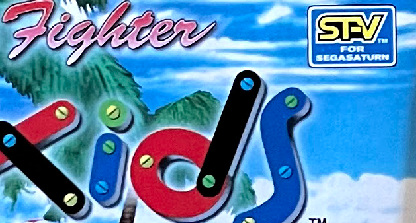
Some arcade families talked about on this blog are the Neo Geo, the Hyper Neo Geo 64, the Sammy Atomiswave, and the Sega ST-V. What do these all have in common?
- They’re each cartridge-based; consisting of a main circuitboard with the CPU, graphics and sound processors, and a smaller interchangeable board consisting primarily of ROM
- They’re each public-facing brands; the machine would outright tell you what platform it was running on.
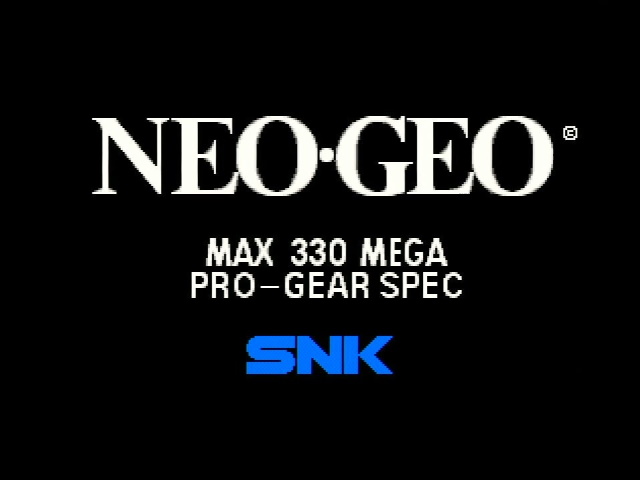
Arcade boards with interchangeable boards definitely existed before the 1990s, but that’s the era they really came in vogue; there are a lot of advantages to mass-produced hardware, and it made things cheaper for the operators as well when the time came to convert a game to a new model. (And of course, the fact that they’d need to go back to the same manufacturer was money in the bank)

The Alpha68k, however, is not one of those. Alpha68k games were distributed as conversion kits or standalone cabinets, but never as cartridges. There was no Alpha68k “mainboard”, and an end user would never get told that they were playing an Alpha68k game. They might not even get to hear that they were playing an Alpha Denshi game, as that brand was usually replaced by the publisher’s (usually SNK or Romstar in the United States).
This isn’t just an end-user matter. I’ve talked about Alpha68k like it’s a single platform: but it’s not. Games were usually not interchangeable, and circuitboards did differ, often significantly. Possibly the first Alpha68k game, 1987’s Mahjong Block Jongbou, used a three-voice AY-3-8910 soundchip, while later games used Yamaha FM synthesizers and even additional DACs. The CPU clock too varied over time. I’ll be showing games I have, but remember that they’re not alone.
Sky Soldiers
Still, 1988’s Sky Soldiers is a pretty typical example of the state of the Alpha68k board at the time; specifically the Alpha 68k II variant. It’s also the largest circuitboard to show up on Nicole Express to date, so that’s nice. It’s bigger than the boxes I’d been using to store these! (Still much lighter than the Hyper Neo Geo, though)

And what do we get here? All of the chips with white SNK stickers are the game ROMs. There’s 22 megabits of ROM in total, which would make this the same size as the smallest Neo Geo game, the 22-megabit Joy Joy Kid. But this isn’t a Neo Geo. What other chips are there?
CPUs
- A Motorola 68000 CPU, which gives the board line its name and runs at 8MHz
- A Zilog Z80 CPU, used for sound and running at 7.15MHz
The 68000 is of course what gave the Alpha68k board its name; the Neo Geo ran its 68000 at 12MHz, but ran its Z80 at a slower (and more typical for the Z80) 4MHz. Given the CPU is only used for sound, perhaps the extra speed (and therefore, a speed tolerant CPU) was seen as an unnecessary expense to be trimmed in mass production? I’m not sure; some Alpha68k boards also used slower Z80s, so presumably this one is fast for a reason.
Sound chip
- Yamaha YM2203C, the “OPN” FM synthesier with four operators and three channel FM sound, in addition to a three-voice sound generator
- Yamaha YM2413, the “OPLL” FM synthesizer, a low-end two-operator synth with 16 channels but limited to one programmable instrument
- LA4465 audio amplifier
- A dedicated 5V regulator, likely to provide cleaner power
The sound system on the Alpha68k board is a bit more complicated than the Neo Geo, which had a single 15-channel YM2610. The YM2610 could do 7 ADPCM sampled channels, and 4 four-operator FM channels. Here, the YM2203 is comparable to the YM2610, but it doesn’t have ADPCM capability.
While some Alpha68k boards used an additional chip to play back audio samples, Sky Soldiers just went with a low-end YM2413 synthesizer; my guess is this is for sound effects.
Memory
- 3x NEC D4364C-12L 8192-byte static RAM with 120ns access time = 24KB
- 8x Sony CXK5814P-35L 2048-byte static RAM with 35ns access time = 16KB
- 4x Toshiba TMM2018AP-35 2048-byte static RAM with 35ns access time = 8KB
- 2x SRM2016N12, labeled 6116ALSP-12 so likely 2048-byte SRAM = 4KB
When you boot up the game, it goes through a hardware test which might help us understand how these chips are used.
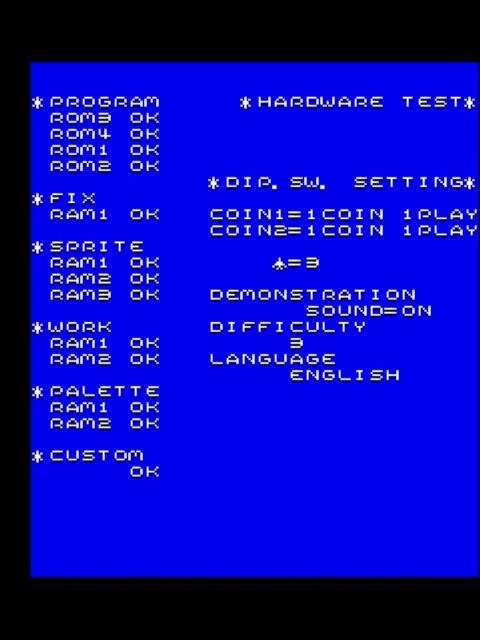
The two SRM2016N12 chips are adjacent to the main CPU, connected through a pair of buffers. These are likely our 4KB of work RAM. (For comparison, the Neo Geo has a whopping 64KB)
Similarly, the three NEC SRAM chips correspond well with the three listed sprite RAM chips, as they’re located in a region of the game board near the graphics ROMs. The main surprise is that they’re 120ns RAM. Note that the Neo Geo has 34kiB of space for sprites, so this is a bit lower.
Finally we have the four Toshiba chips. If we attribute two of them to palettes, and one to the fixed layer, you might wonder what the final one is for. For that, we need to remember that this program is running on the 68000 CPU. The Z80 audio CPU also needs RAM, and 2KB is pretty reasonable.
So what about the Sony CXK5814P-35L chips? These are the line buffers. A complete line is stored in buffers on the Neo Geo as well; the hardware draws out a line of pixels into RAM, and then sends that to the screen while beginning to work on the next line.
While looking into this, I took a look at the MAME source code. If I’m reading this right, all of the RAM is mapped into memory, including the sprite attributes. On the Neo Geo, you need to access the video RAM by going through the video hardware, you can’t access it directly.
Custom chips
The vast majority of the board is covered, not in the custom chipset you’d expect from the Neo Geo, but from discrete logic chips. As you can see, hardware sprites, a fixed tile layer, it’s all here and it’s all discrete logic. There is some serious skill here; sadly, due to the number of vias and traces going underneath chips, you’d probably need to desolder everything to decode it out.
Even so, there are a few custom chips.
INPUT-87
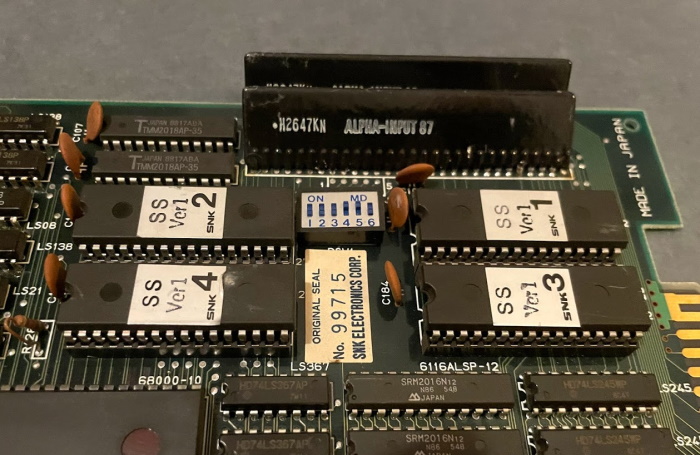
These two chips are hooked up to input lines on the JAMMA edge connector, and seem to be some kind of buffers. The interesting thing here is that they are single-inline package (SIP) chips; only one row of pins holds them to the board. In fact, they’re not chips at all; you can see on the backside that they are some kind of potted circuitboard.
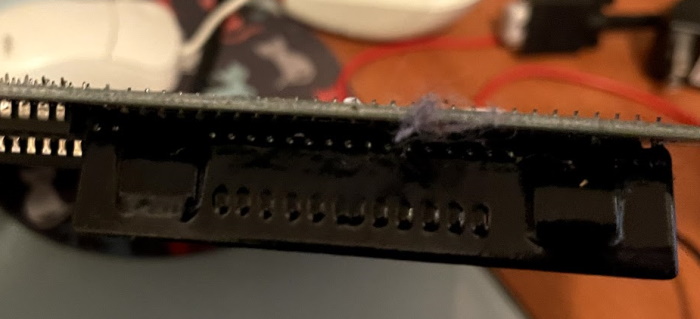
Elsewhere on the circuitboard, you can see unpopulated headers for the very similar INPUT-84. That’s because this circuitboard was also used for the earlier Time Soldiers, another SNK-published Alpha Denshi game that used rotary joysticks, much like SNK’s in-house Ikari Warriors. On that board, additional input harnesses were needed for the rotating joysticks’s rotation feature. This game doesn’t have that.
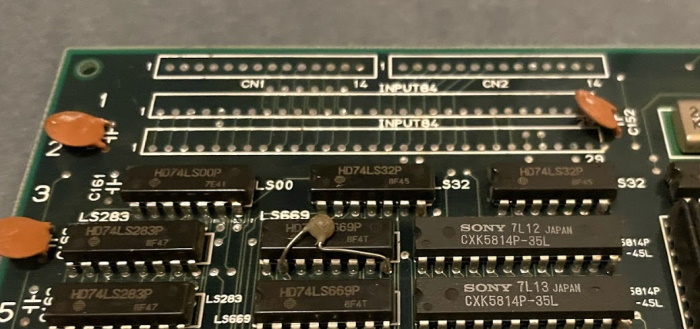
ALPHA-8511
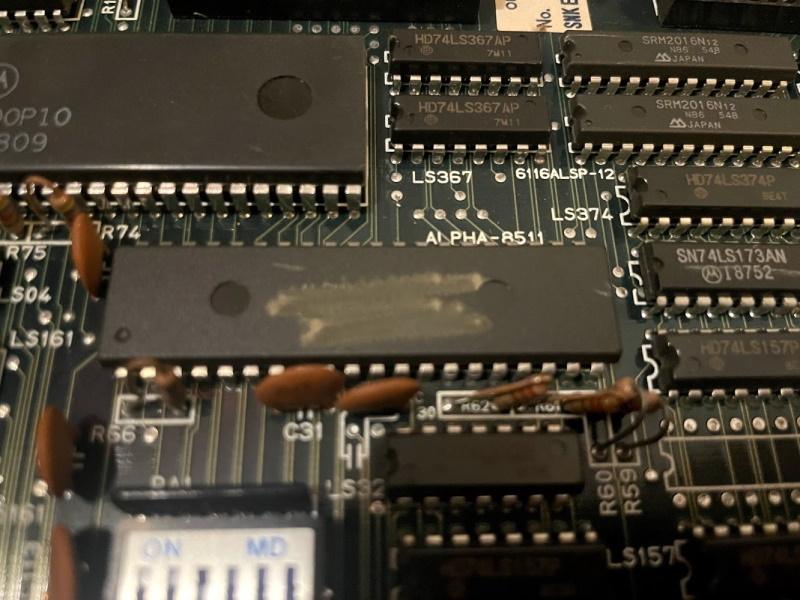
Now we have ALPHA-8511. For some reason, the name is scratched off the surface of the chip, but the circuitboard is labeled. According to Arcade-Museum.com, this is common on Sky Soldiers, but to what end I couldn’t tell you.
What I can tell you, using research from MAME, is that this is a microcontroller, hooked up to the coin input line, and has access to that 4KB of work RAM the CPU has. Apparently, it handles telling the CPU when a coin is inserted.
That might seem pretty pointless, since the CPU is handling all sorts of other input lines (with the help of INPUT-87). My unsubstantiated guess is that the primary purpose of this microcontroller is as a sort of copy protection; since almost all the circuitry of this board is in easily accessible discrete logic, clones could easily be made. But a microcontroller’s internal program can not be dumped easily, and previous Alpha Denshi games used ALPHA-8xxx badged microcontrollers for this purpose.
This is speculation because we don’t have a dump of this still, and won’t until someone is willing to decap and electron microscope one of these. (Apparently, some Alpha68k games like Gold Medalist also used the microcontroller to provide a timer input or to play other roles)
While all the graphics logic are done in discrete logic, and the sound system with freely available Yamaha chips, you can see that Alpha used the most custom parts of the motherboard to control input and coins, two things no arcade machine could do without. Of course, Alpha68k machines, including Sky Soldiers, were eventually cloned, and not all of them used the microcontroller either as we’ll see. So my theory could be completely wrong.
In any case, this is one chip that doesn’t appear to have any equivalent on the Neo Geo.
Isn’t this supposed to be a game?
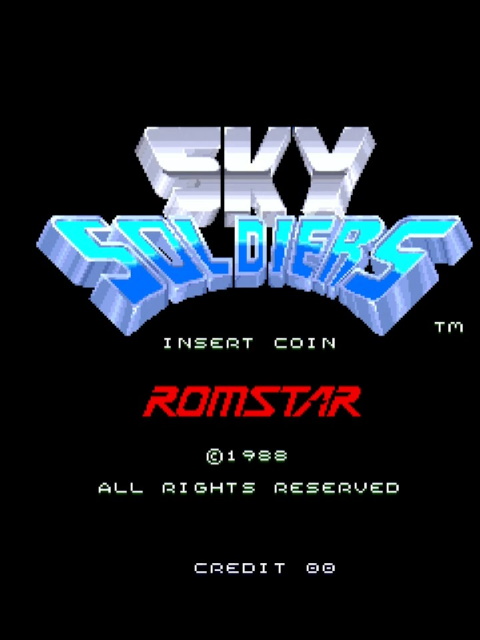
The game is fine. It’s a vertically scrolling military shooter with a time travel theme. I’ll defer to fans of the genre on whether it’s a good example thereof, and I’ve seen some very positive reviews, but I will admit it really didn’t keep my interest for too long. ADK didn’t really do any shooters like this on the Neo Geo, despite making a bunch beforehand.


It is kind of funny to see your futuristic jet shooting down WW2-era aircraft, though. This seems to be in terms of setting essentially the previous Time Soldiers but turned into a traditional shooter, perhaps to sell cheaper conversion kits without the rotary joystick?
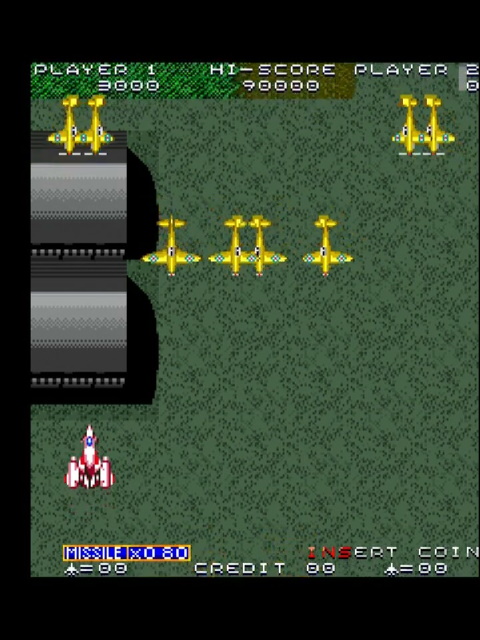
You might notice a few things about the graphics. For one thing, this is a vertically oriented game, or “tate mode”, as it’s frequently called among fans of shooters. (“Tate” is not short for rotate, but a Japanese word meaning vertical) The image is also somewhat offset, but that’s par for the course for arcade boards; operators were trusted to be able to make the appropriate adjustments on monitors.
A big difference is the resolution. Neo Geo games are always in a 320-pixel-wide resolution, though some games may put black bars on the side in the overscan area. (Arcade machines generally don’t care about overscan, but home users aren’t expected to reconfigure their TVs) This game, however, is in a 256-pixel wide resolution. (Or, since it’s in tate mode, 256 pixels tall) Additionally, the color depth is not as high– this isn’t just the art style. MAME developers report that one bit (the “dark bit”) of the palette RAM isn’t hooked up, so the Alpha68k only has 15-bit color, like the later Super Nintendo.
Paddle Mania
So, let’s take a look at an earlier game, one that uses the Alpha68k-I variant, 1988’s Paddle Mania.
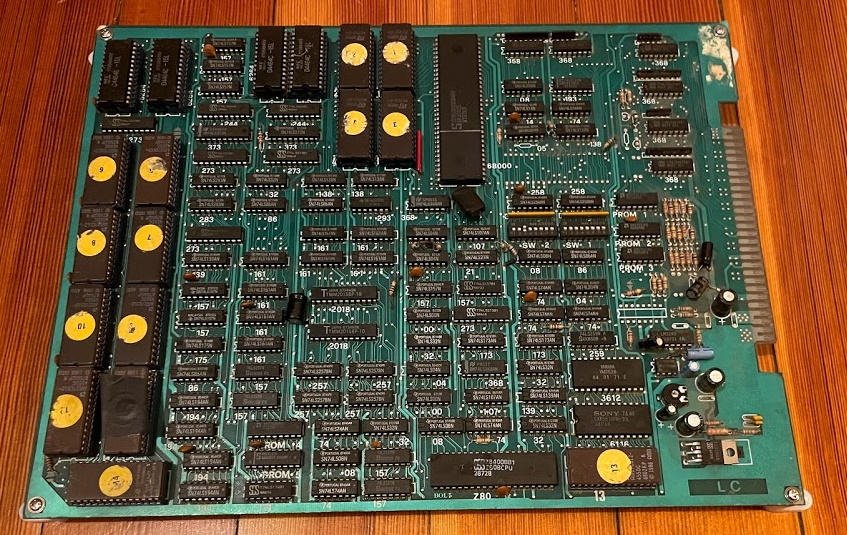
This is smaller than the last one. But you might notice that this board is devoid of any SNK or Alpha markings, even a label. Why is that? Because this isn’t a legitimate board. Yes, we’ve found ourselves another bootleg.
There are some interesting things here. For example, the iconic row of 2KB Sony SRAM chips is not present; it’s posible that the line buffer is instead handled by the NEC D4464C-15L chips instead. The ALPHA-87 “chip” is not present either; in fact, Paddle Mania is supposed to be a four-player board, but this board doesn’t contain any headers for the extra two players; none of the chips are dated later than 1988, so this was likely a pretty early bootleg.
Some differences, though, are expected for the Alpha-68k I board. The dual Yamaha sound chips are replaced by a single YM3812, a nine channel two-operator FM synthesizer also used on the famous PC AdLib cards. The 68000 is clocked at a slower 6MHz, and the Z80 at 4MHz. Paddle Mania did not contain an ALPHA-8511 or similar microcontroller, which may have made it more promising to clone.
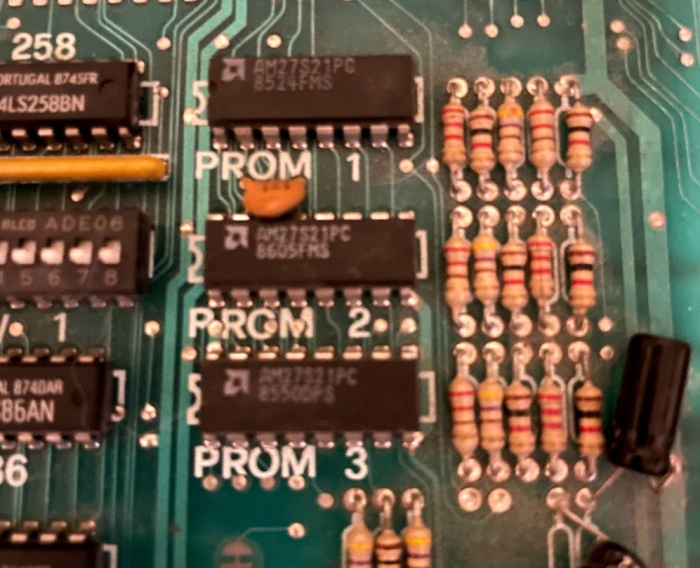
Another interesting thing is the presence of these PROMs (programmable read-only memory), which are usually one-time programmable. It looks like on the original board PROMs were used to contain palette information; there’s no palette information in the MAME memory map. Ah, the things you can get away with when your circuit board is only designed to play one game…
These three PROMs, being next to each other, I assume that they correspond with the “1.p1”, “2.p2”, and “3.p3” PROMs in MAME. If so, they are likely the same as the blue, red, and green components of palettes, respectively. Since these are 4-bit PROMs, this board may be limited to 12-bit color. That’s less than the Sky Soldiers board above, but more than the PC Engine and Sega Genesis, which could each only do 9-bit color.
The game
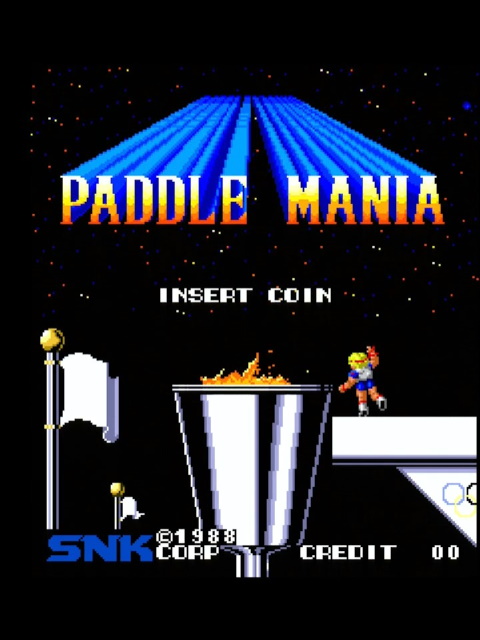
I enjoyed Paddle Mania a lot more than Sky Soldiers, but it might just be my kind of game. Paddle Mania plays like a midpoint between Pong and Windjammers with a loose Olympic theme (the IOC will definitely be fooled by the different colors in the rings); you must swing a paddle to hit the ball into the opponent’s side, but there’s less emphasis on different characters or power-up moves like in Windjammers.
Also, if what I see online is correct, this game was actually developed by SNK rather than Alpha Denshi. So the hardware collaboration between the two companies may even have started here; prior to the 68k-based games, ADK seemed to work more closely with Sega with games like Champion Baseball.

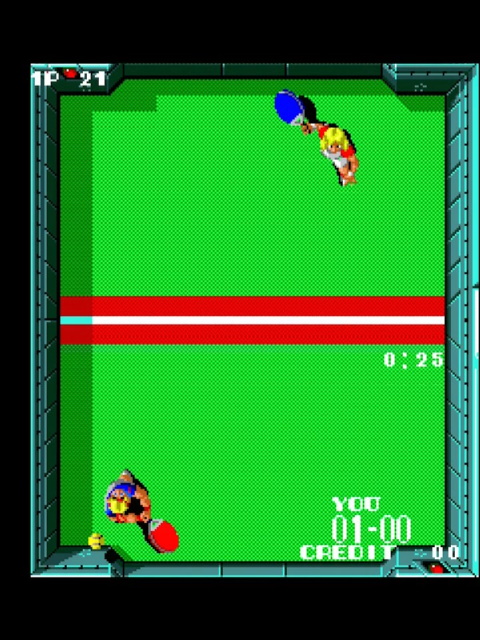
Where the game gets fun is after the first match, where you start playing against other teams like the U.S. Volleyball team, who play the game as if it was a game of Volleyball, passing it to each other and serving it, while you try to send it back with your paddle. That’s the kind of silliness I can get behind. The game also gets harder at this point, and I don’t actually have a good setup for capturing tate mode, so this was the farthest I could get playing it sideways.

One interesting thing on the title screen is that at one point, the title zooms in. This is a graphical effect made by having multiple sets of tiles, and isn’t “true” scaling, but it does hint at a major technical innovation that the Neo Geo hardware would hold over the Alpha68k: the smooth downscaling of sprites.
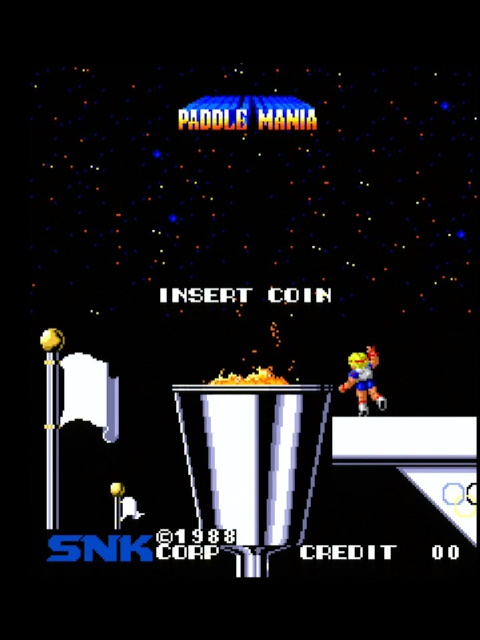
No, I mean the real game
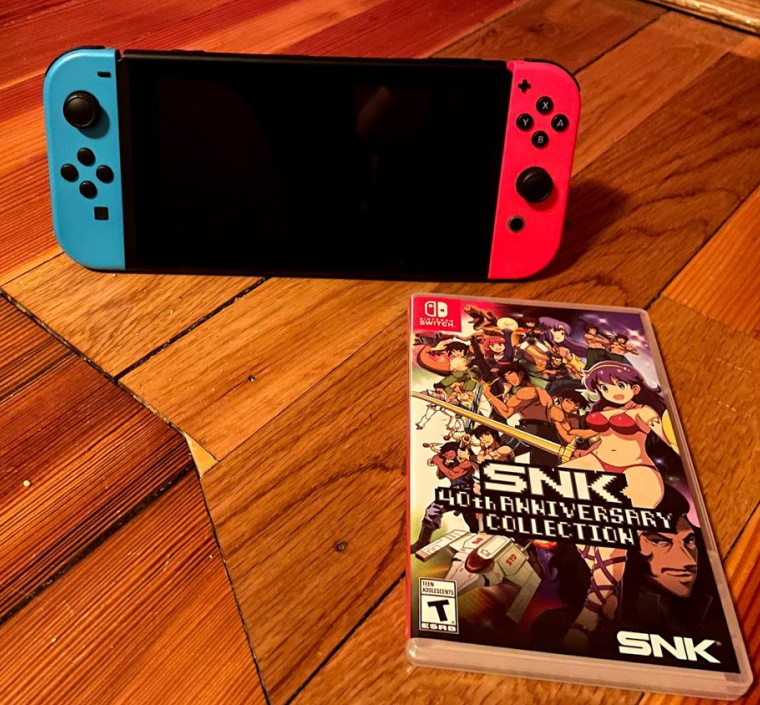
So I don’t have a copy of Paddle Mania’s original arcade PCB. But unlike Sky Soldiers, which has as far as I know never been re-released, Paddle Mania is actually a game you can go out and buy today, for some obscure console called the “Nintendo Switch”, as well as others. It’s part of SNK’s SNK 40th Anniversary Collection. Other Alpha68k games here include Time Soldiers, complete with a twin-stick substitute for the lack of rotary joystick.

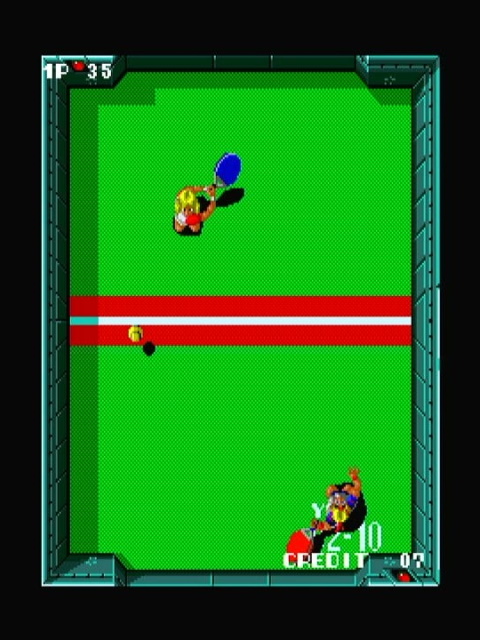

So, how does it play? Well, I did worse, but that might just be because of the default control scheme that maps left and right swing to a joystick instead of buttons. Note that the arcade conversion kit manual recommends using buttons, so I’m not sure why SNK chose the stick for the remake– thankfully, you can configure the buttons as you please.

What we can see here, though, is that the bootleg is pretty close. The colors are a bit brighter, but that might just be my capture setup or supergun; brightness of analog signals can be more of an art than a science.
Alpha to the future
The Alpha68k boards seems to have been released alongside a “SNK68” board, also designed by Alpha, which did not include their custom chips and was used by some SNK games like Ikari III and P.O.W. Prisoners of War; they featured the same sprite-based graphics engine, but did not use Alpha’s custom chips. The last games Alpha released using the Alpha68k family were the Alpha68k V family, Gang Wars and Sky Adventure. And finally, in 1990 we got the Neo Geo, which moved that discrete logic into custom chips. Comparing to a single-game Neo Geo board from 2003, the size change is pretty dramatic.
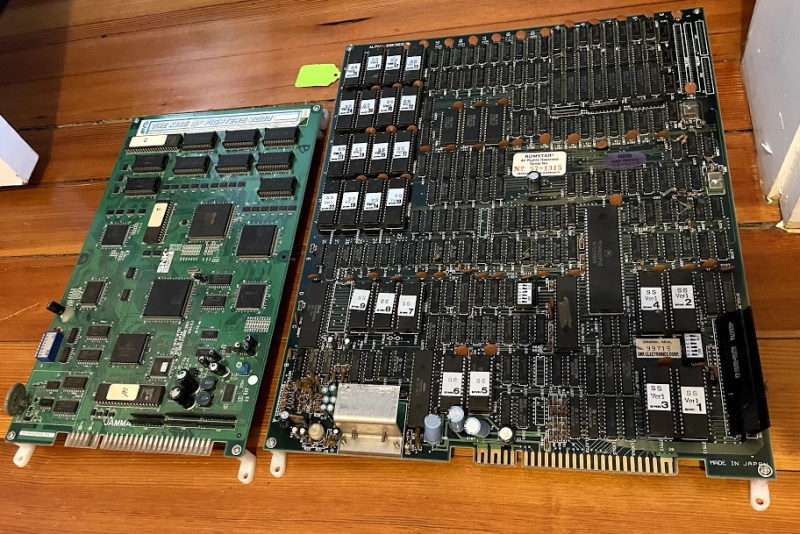
As far as I can tell, the Neo Geo was the last hardware to come out of ADK; the Hyper Neo Geo seems to have been designed in-house by SNK, though ADK was the only non-SNK company to develop for it. But if it is ADK’s swan-song, it’s a good one; the Neo Geo’s life ended 2003, the same year ADK Corporation (which had left the video game industry) filed for bankruptcy and dissolved. But hey, they had a pretty good run!
